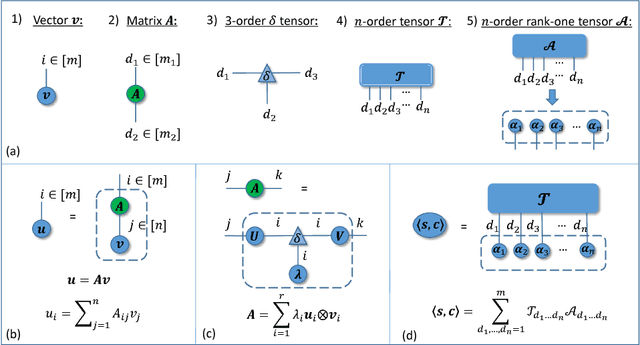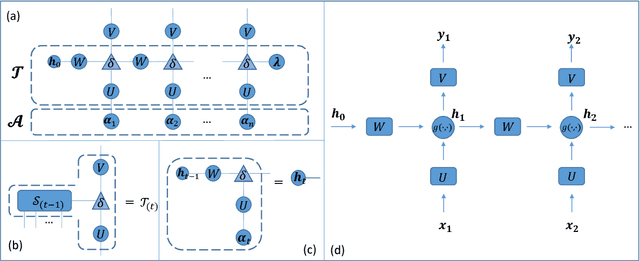Lipeng Zhang
A Generalized Language Model in Tensor Space
Jan 31, 2019



Abstract:In the literature, tensors have been effectively used for capturing the context information in language models. However, the existing methods usually adopt relatively-low order tensors, which have limited expressive power in modeling language. Developing a higher-order tensor representation is challenging, in terms of deriving an effective solution and showing its generality. In this paper, we propose a language model named Tensor Space Language Model (TSLM), by utilizing tensor networks and tensor decomposition. In TSLM, we build a high-dimensional semantic space constructed by the tensor product of word vectors. Theoretically, we prove that such tensor representation is a generalization of the n-gram language model. We further show that this high-order tensor representation can be decomposed to a recursive calculation of conditional probability for language modeling. The experimental results on Penn Tree Bank (PTB) dataset and WikiText benchmark demonstrate the effectiveness of TSLM.
A Quantum Many-body Wave Function Inspired Language Modeling Approach
Sep 03, 2018



Abstract:The recently proposed quantum language model (QLM) aimed at a principled approach to modeling term dependency by applying the quantum probability theory. The latest development for a more effective QLM has adopted word embeddings as a kind of global dependency information and integrated the quantum-inspired idea in a neural network architecture. While these quantum-inspired LMs are theoretically more general and also practically effective, they have two major limitations. First, they have not taken into account the interaction among words with multiple meanings, which is common and important in understanding natural language text. Second, the integration of the quantum-inspired LM with the neural network was mainly for effective training of parameters, yet lacking a theoretical foundation accounting for such integration. To address these two issues, in this paper, we propose a Quantum Many-body Wave Function (QMWF) inspired language modeling approach. The QMWF inspired LM can adopt the tensor product to model the aforesaid interaction among words. It also enables us to reveal the inherent necessity of using Convolutional Neural Network (CNN) in QMWF language modeling. Furthermore, our approach delivers a simple algorithm to represent and match text/sentence pairs. Systematic evaluation shows the effectiveness of the proposed QMWF-LM algorithm, in comparison with the state of the art quantum-inspired LMs and a couple of CNN-based methods, on three typical Question Answering (QA) datasets.
* 10 pages,4 figures,CIKM
 Add to Chrome
Add to Chrome Add to Firefox
Add to Firefox Add to Edge
Add to Edge